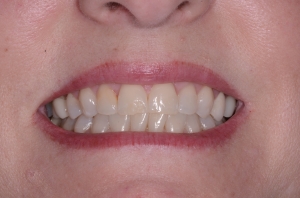
When I was a teenager, I did not go to the dentist on a regular basis. I also had an affinity for gummy bears and junk food and my oral hygiene was spotty at best. I never once thought about my teeth or oral health until one day eating a gummy bear caused a sharp pain in a lower right tooth. I quickly shifted the gummy bear to the other side of my mouth and the pain was gone. It started a six-month ordeal of only eating on one side of my mouth and blissfully ignoring the brewing problem.
I can still remember the first shooting pain in my face. It seemed like it was a bolt of lightning followed by a hard ache. I took some Tylenol and it calmed down some, but I knew that I was in trouble. I called my father and asked him what to do, he was an orthodontist but lived in another state. He quickly called around and made an appointment for me at a local dentist. The pain continued to increase until it was unbearable. To this day I have never felt pain that intense.
The day of the appointment could not come soon enough. The dentist identified the problem, a large cavity on a molar in the lower right of my mouth. He numbed me up and proceeded to do a root canal and crown. I remember being very nervous about the root canal, everyone said how painful they are. However, when I got home, and the numbness wore off I was pleasantly surprised to feel no pain at all! The root canal had solved my problem. The tooth is still healthy and usable almost 34 years later.
Root canals have a bad rap. People associate them with pain when they are the procedure that solves and/or prevents the pain of a toothache. Root canals are also our only way of relieving pain in a tooth that has damage or infection to the pulp tissue and nerve other than pulling the tooth. Root canals also have a very high success rate, nearing 95%.
Why would a tooth need a root canal?
In a tooth that needs a root canal the pulp is either already dead and infected by bacteria or irreversibly inflamed and in the process of dying. In the early stages of an inflamed tooth there is a lot of pain. Once the tooth dies the pain may go away for a while, however, a long-term infection called an abscess will then start that could be life threatening if not treated.
What is a root canal?
A root canal is exposing the pulp chamber of a tooth where the blood and nerve supply is located. Small files are used to remove the remaining pulp tissue and reshape the canals in a smooth funnel shape. The pulp chamber and canals are cleaned with special liquids to kill any bacteria and remove any debris. Then they are dried and a special bioceramic paste is placed in the canal to fill the space. A small, fitted rubber point is then placed into the sealer to help ensure that the space is fully filled. The tooth is then sealed with a filling and on molars and premolars a crown is placed to prevent the tooth from breaking.
If you have any questions about root canals, please contact us at Stoneridge Dental.



